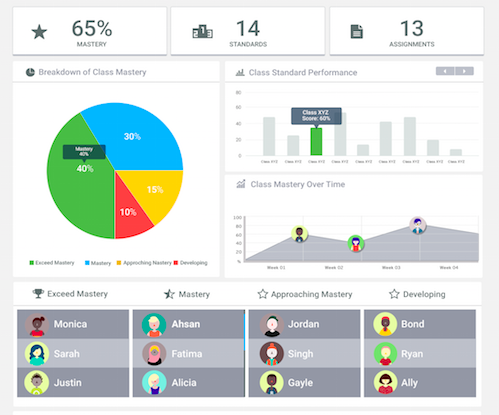Are you looking for strategies that help your students improve their ability to concentrate? If so, keep reading.
1. Show when teaching new skills. Let the student practice hands-on learning of new skills to enable concentration.
2. Utilize images, diagrams, smartboard, and gestures when delivering information to keep the student’s attention.
3. Utilize several modalities (e.g., auditory, visual, tactile, etc.) when presenting instructions, explanations, and instructional content . By using several modalities, the information may hold the student’s interest for a longer period.
4. Plan essential learning activities /tasks/meetings at times when the student is most likely to keep attention (e.g., one hour after medication, 45 minutes after lunch, first thing in the morning, etc.).
5. Provide a task that involves instant, short-term tasks.
6. Spotlight essential information the student reads (e.g., instructions, reading tasks, math word problems, etc.).
7. Let logical consequences happen as a result of the student’s failure to concentrate (e.g., work not done or work finished inaccurately must be made up during leisure time, not concentrating while people are talking results in not knowing what to do, etc.).
8. Teach time management skills. Give a daily plan and have the student follow it.
9. Create classroom rules: • Remain on-task. • Complete assignments quietly. • Remain in your seat. • Finish tasks. • Meet task expectations. Examine rules often. Praise students for following the rules.
10. Manage tasks by dividing them into small segments. Establish deadlines and reward the student after finishing each segment of the task.
11. Show tasks in small amounts (e.g., designate 10 problems, use pages removed from workbooks, etc.).
12. Teach and practice information-gathering skills (e.g., listen carefully, write down essential points, ask for clarification, wait until all information is presented before starting a task, etc.).
13. Praise the student for beginning, attending to, and finishing tasks.
14. Organize their surroundings to lessen distracting stimuli (e.g., place the student on the front row; Give a table or quiet space away from distractions). Use this as a way to reduce distractions, never as a punishment.
15. Establish time limits for finishing tasks. Prompt the student as a reminder of time constraints when working on projects.
16. Utilize more exciting or stimulating learning activities as a reward for finishing fewer exciting learning activities (e.g., the student must finish drill and practice before working on the computer).
17. Praise the student for concentrating: (a) give the student a concrete reward (e.g., classroom privileges, passing out learning materials, 10 minutes of free time, etc.) or (b) give the student an informal reward (e.g., praise, handshake, smile, etc.).
18. Communicate clearly to the student the duration of time they have to finish a task. The student may want to use a timer to finish the tasks within the given time.
19. Provide physical contact with the student while talking to them (e.g., touch the student’s hand or shoulder).
20. Give clearly stated instructions, written or oral. Make instructions as simple and concrete as possible.
21. Consider using assistive technology designed to help students to attention deficit hyperactivity disorder to concentrate. Click here to view list of assistive technology apps that we recommend.





